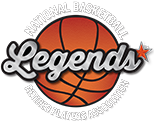He's Back... My Criteria For the Diamond Anniversary
By Peter Vecsey
The hell with load management!
After months away enjoying the three R’s—Rest and Relaxation while at intervention-induced Rehab—I’ve returned just in time for the new season.
Having been fully inoculated and only partially emasculated, there’s no telling where these missives might go.
OK, I lied; they’re going first down memory lane.
Twenty-five years after being selected by the NBA as one of 50 decision makers to elect the league’s All-Time 50 Greatest Players since it began doing business, I again made the cut as the number swelled to 75.
It’s a very rare daily double for which I am greatly honored. I was gonna say ‘humbled,’ but why start now at 78?
For the uninitiated, the selection committee was, and continues to be, comprised of exceptional players (prohibited from voting for themselves), team and league officials and media members. It’s unfortunate many from the latest delegation never eyewitnessed a large percentage of players prior to 1970, probably even 1980. This pretty much explains why so many of the elite from those three or four eras get recurrently short-sheeted in terms of appropriate appreciation.
I neither took my 1996 homework assignment for granted, nor remotely breezed through the reprise, which was excruciatingly challenging.
I could’ve taken the leisurely way out and simply added 25 names to the 25-year-old list. Then again, there’s nothing faintly simple about picking so few when there is easily twice that many laudable candidates.
Clearly, that’s the case! Because if the inverse were true and I’d been forced to stretch the quest to reach 75 sanctified luminaries, “then the league should’ve disbanded long before the ABA graciously absorbed it,” accentuated column castigator Frank Drucker.
Whittling the Top 75 to its demanding dimension is somewhat similar to choosing annual All-Star teams…only infinitely tougher.
Having personally seen all the greats, while experiencing the obscene of many ingrates (Marv Albert and I, by the way, are the two oldest media voters), I had no other choice but to discard a platoon of boyhood idols who’d seamlessly morphed into adult friends.
That should tell you everything about how grueling a task this was.
Reaching out to people I respect for advice, the best I heard was “choose a player according to the influence he had on the era he played.”
Starting with roughly 35-40 definite appointments, the remaining Manchurian candidates could not be settled on merely by looking at statistical rungs in the record book, retired numbers and rings.
Piling up passels of points did not automatically engender my endorsement, far from it, so Hall of Famers and Most Valuable Players be prepared.
My choices had to have brought more to the table than just a knife and fork, as Mel Daniels used to preach on the court’s altar and in the barn; silly stuff such as defending, rebounding, passing, erasing shots and sacrificing the body, theoretically without overthrowing/undermining a coach or several along the way…or taking out a hit on one.
I am not a believer in ‘could he have played today?’, meaning he played when he played and that’s how he was/wasn’t graded.
Not that mistakes of omission and commission weren’t (by me) in the first incarnation, and severe second-guessing (again by me) didn’t occur after handing in the finished product for this revival.
I was greatly gutted leaving Dan Issel on the cutting-room floor. One of the true crossover artists of his day, Issel’s sacrosanct skills were deftly displayed pre-and post-merger.
He didn’t discriminate, averaging more than 25 points and nearly 11 rebounds in 500 ABA games, then about 20 and eight (718 games) after that…
…at least 80 games played in 12 of his 15 seasons (never less than 76; I’m greatly influenced by this category, as well as minutes played) and eight consecutive seasons of better than 50 percent from the field.
I’m pinky-swearing here and now to fix that glitch when I vote for the centennial squad, by absentee ballot, if necessary.
In 1996, I included a pre-mutiny/chronically-injured Penny Hardaway while excluding (alphabetically) Hall of Famers Walt Bellamy, Tom Heinsohn, Bob Lanier, Bob McAdoo and Dominique Wilkins.
To my credit, I was adamant Shaquille O’Neal—about to begin his first season as a Laker after flaunting his muscle for four in Orlando—was creditable despite a then-limited body of work.
That ‘limited body of work’ phrase deserves some clarification. If impair-plagued Bill Walton deserved to be chosen (he did not), then how were others in near-comparable circumstances, such as Ralph Sampson and Maurice Stokes, overlooked?
Walton put forth 1½ dominant campaigns in Portland (18.6 points, 14.4 rebounds regular season, 18.2, 15.2 playoffs in ‘77 Blazer title season) while never playing more than 65 games on a single Oregon trail hike.
In Boston, the season before Medical Bill retired, he played a personal-best 80 games (just over 19 minutes per) as the award-winning sixth man during the Vitamin C’s ‘85-‘86 banner year.
Sampson was the deacon of durability his first three Houston hoedowns, appearing in every game (243), minus three. During that stretch, he averaged more than 20 points and nearly 11 boards. And let’s not forget the Rockets reaching The Finals in 1986, where the Celtics silenced them, but not before Sampson unhesitatingly flexed in a fight with 6-foot Jerry Sichting.
His dwindling appearance numbers only made it past 48 games once in the last six seasons, done in by knee surgeries and back problems.
Stokes was a triple threat, three-time All-Star in as many seasons for the late-50’s Rochester/Cincinnati Royals (16.4 points, 17.3 rebounds, second to Bob Cousy in number of assists) before his career—and ultimately life—was cut short, the result of post-traumatic encephalopathy, a brain injury that damaged his motor-control center, after hitting his head on the court.
While not a fan of required reading, do yourself a favor and learn (relearn) Stokes’ story.
The ‘limited body of work’ category also has to include Connie Hawkins. Unconscionably blackballed, he was denied entry into pro basketball until the age of 25 (ABA’s Pittsburgh Pipers) and the NBA (Suns) until the age of 27.
Again, numbing with numbers is not my thing, but trying gawkin’ at Hawkins’ work sheet—his ‘other league’ and early Phoenix seasons were borderline illegal—then consider how he was robbed of five, six of seven prime-performing years.
While a lover of longevity, how could I omit several of today’s quasars despite tapered resumes leading to the league’s diamond-district season?
It’s not about potential, in case you’re wondering, but rather weighing ‘limited body of work’ against ‘expected continued excellence’ like Shaq and unlike Penny.
We now return to ‘choose a player according to the influence he had on the era he played.‘
According to Hall of Fame coach Alex Hannum, to be considered one of the greatest of all time, all phases of the game must be taken into account—“defense, individual and team offense and leadership.”
Hannum, by the way, for many who never heard of him, was the coach to derail the Celtics’ 11-of-13 championship choo-choo (St. Louis Hawks in ‘58, Philly in ‘67).
When in more doubt than usual, I voted for…
—players I would go out of my way, even pay, to see play,
---pIayers I would watch to see what they were doing, regardless of where the ball was at the time.
---players whose presence affected how the other nine guys on floor played and how the coaches coached.
In other words, my choices made their teams, teammates and coaches better.
I’ve never shied away from revealing my choices for any and all awards. I also disclosed my Top 50 ballot weeks before the NBA announced the final verdict. In this instance, however, I’m not eager to divulge my Top 75 once the league publicizes its result.
That, my friends and foes, is a clear admission I did not get all 75 players correct. I realized that the day after turning in my term paper, but there was no turning back, according to the rules. Even had I been allowed to change one or two choices, though, I still would not have been satisfied I got the project right.
I should only invest this much effort and examination into filling out trivial political preferences.
****
At the time the Top 50 list was released, only Pete Maravich was deceased. A dozen have died since: Wilt Chamberlain, Dave DeBusschere, Paul Arizin, Hal Greer, John Havlicek, George Mikan, Bill Sharman, Moses Malone, Dolph Schayes, Nate Thurmond, Wes Unseld and Elgin Baylor.
Of the 50 voters who participated in ‘96, almost half have passed: Red Auerbach, Baylor, Marty Blake (NBA GM/scout), Chamberlain, Mitch Chortkoff (Culver City Observer), Chuck Daly, Joe Gilmartin (Phoenix Gazette), Sam Goldaper (New York Times), Hannum, Les Harrison (Rochester Royals owner), Havlicek, Chick Hearn (Lakers TV voice), Red Holzman, Phil Jasner (Philadelphia Inquirer), John Kerr, Leonard Koppett (New York Times/New York Post), Leonard Lewin (New York Post), Dick McGuire, Mikan, Harvey Pollack (76ers’ statistical connoisseur), Jack Ramsay, Schayes, Sharman and Unseld.
As if there wasn’t already ample incentive to do the due diligence, the above two graphs provided extra added coercion.


